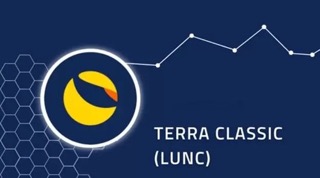The researchers at Project Meridian identified several benefits of synchronization including reduction of risk, time, and cost invoked in settling a range of transactions.
In a joint financial program dubbed Project Meridian, the Bank of England and the Bank for International Settlements (BIS) Innovation Hub London Centre investigated the use of modern technology to advance financial payments through real-time gross settlement (RTGS) systems. The Project Meridian used central bank money that is free of credit risk and held by commercial banks in RTGS accounts. Notably, the Bank of England published a report on Project Meridian detailing the findings and the importance of updating the financial payment infrastructure.
“Central banks can use the findings from the project to inform considerations on whether to implement synchronization in their RTGS systems,” the report noted.
The synchronization payment process is a way of ensuring the exchange in ownership of funds occurs if and only if ownership of another asset also changes. The synchronization payment process is already used in some global markets including Australia and Switzerland. With notable success, Project Meridian is keen to duplicate it in other markets as demand for fast, efficient, and affordable payments arises.
Moreover, the researchers at Project Meridian identified several benefits of synchronization including reduction of risk, time, and cost invoked in settling a range of transactions.
Synchronising the change in asset ownership to the respective change in funds eliminates the risk of one side not delivering, also reducing liquidity and transaction costs. Project Meridian shows how it can be done: https://t.co/Vcufu7toTi#BISInnovationHub @bankofengland pic.twitter.com/KWW2hhZgW1
— Bank for International Settlements (@BIS_org) April 19, 2023
One of the experimented use cases for the Meridian prototype was the housing transaction. Reportedly, the Bank of England and the Bank for International Settlements (BIS) successfully purchased houses in Wales and England through the synchronization network using distributed ledger technology (DLT).
Through digitizing of involved documents that are stored on a decentralized ledger, the banks concluded there are potential benefits of the Meridian prototype beyond settlements.
“In the Meridian prototype, the transaction is digitized, and the movement of funds is conditional on the movement of assets. This offers an opportunity for professionals who work in the asset market – in this case the housing market – to streamline their processes,” the report added.
Project Meridian Precedes CBDC Payments
The completion of Project Meridian comes a month after the Bank for International Settlement announced the conclusion of the CBDC program dubbed Project Icebreaker. Notably, the project involved the central banks of Israel, Norway, and Sweden, whereby it studied the benefits and challenges of implementing CBDC in international payments.
The #BISInnovationHub Nordic Centre and the central banks of Israel, Norway and Sweden have concluded Project Icebreaker, which studied the potential benefits and challenges of using retail #CBDC in international payments @riksbanken @NorgesBank https://t.co/2OfFYaPbr6 pic.twitter.com/jPFjrCXDlT
— Bank for International Settlements (@BIS_org) March 6, 2023
The Bank of England has been also rigorously testing the use of Central Bank Digital Currency (CBDC) to update its payment infrastructure. In February this year, the Bank of England published a CBDC consultation paper with public responses expected by June 7, 2023. Meanwhile, the Bank of England continues to assess the future need for CBDC amid increased cryptocurrency adoption.
Let’s talk crypto, Metaverse, NFTs, CeDeFi, and Stocks, and focus on multi-chain as the future of blockchain technology.
Let us all WIN!




